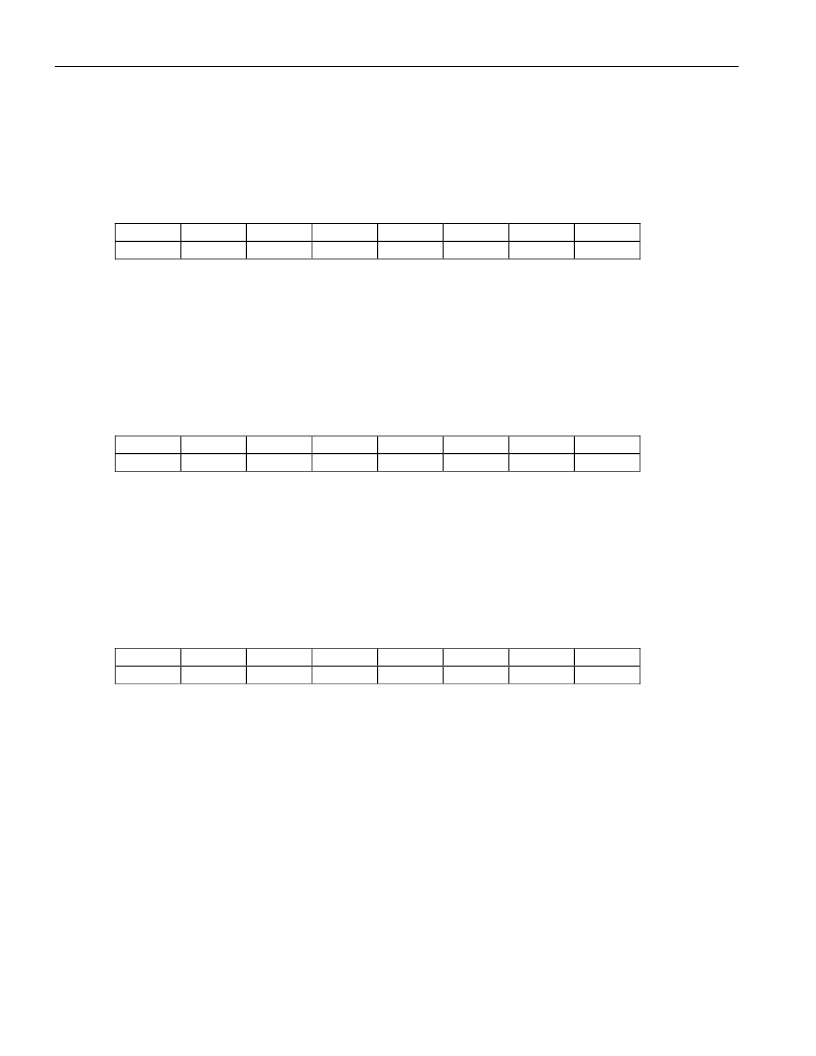- 您現(xiàn)在的位置:買賣IC網(wǎng) > PDF目錄376965 > DS21Q55 (Electronic Theatre Controls, Inc.) Quad T1/E1/J1 Transceiver PDF資料下載
參數(shù)資料
| 型號: | DS21Q55 |
| 廠商: | Electronic Theatre Controls, Inc. |
| 英文描述: | Quad T1/E1/J1 Transceiver |
| 中文描述: | 四路T1/E1/J1收發(fā)器 |
| 文件頁數(shù): | 99/237頁 |
| 文件大小: | 1438K |
| 代理商: | DS21Q55 |
第1頁第2頁第3頁第4頁第5頁第6頁第7頁第8頁第9頁第10頁第11頁第12頁第13頁第14頁第15頁第16頁第17頁第18頁第19頁第20頁第21頁第22頁第23頁第24頁第25頁第26頁第27頁第28頁第29頁第30頁第31頁第32頁第33頁第34頁第35頁第36頁第37頁第38頁第39頁第40頁第41頁第42頁第43頁第44頁第45頁第46頁第47頁第48頁第49頁第50頁第51頁第52頁第53頁第54頁第55頁第56頁第57頁第58頁第59頁第60頁第61頁第62頁第63頁第64頁第65頁第66頁第67頁第68頁第69頁第70頁第71頁第72頁第73頁第74頁第75頁第76頁第77頁第78頁第79頁第80頁第81頁第82頁第83頁第84頁第85頁第86頁第87頁第88頁第89頁第90頁第91頁第92頁第93頁第94頁第95頁第96頁第97頁第98頁當前第99頁第100頁第101頁第102頁第103頁第104頁第105頁第106頁第107頁第108頁第109頁第110頁第111頁第112頁第113頁第114頁第115頁第116頁第117頁第118頁第119頁第120頁第121頁第122頁第123頁第124頁第125頁第126頁第127頁第128頁第129頁第130頁第131頁第132頁第133頁第134頁第135頁第136頁第137頁第138頁第139頁第140頁第141頁第142頁第143頁第144頁第145頁第146頁第147頁第148頁第149頁第150頁第151頁第152頁第153頁第154頁第155頁第156頁第157頁第158頁第159頁第160頁第161頁第162頁第163頁第164頁第165頁第166頁第167頁第168頁第169頁第170頁第171頁第172頁第173頁第174頁第175頁第176頁第177頁第178頁第179頁第180頁第181頁第182頁第183頁第184頁第185頁第186頁第187頁第188頁第189頁第190頁第191頁第192頁第193頁第194頁第195頁第196頁第197頁第198頁第199頁第200頁第201頁第202頁第203頁第204頁第205頁第206頁第207頁第208頁第209頁第210頁第211頁第212頁第213頁第214頁第215頁第216頁第217頁第218頁第219頁第220頁第221頁第222頁第223頁第224頁第225頁第226頁第227頁第228頁第229頁第230頁第231頁第232頁第233頁第234頁第235頁第236頁第237頁

DS21Q55 Quad T1/E1/J1 Transceiver
99 of 237
14.2.3 Software Signaling Insertion-Enable Registers, T1 Mode
In T1 mode, only registers SSIE1–SSIE3 are used since there are only 24 channels in a T1 frame.
Register Name:
SSIE1
Register Description:
Software Signaling Insertion Enable 1
Register Address:
08h
Bit #
7
6
5
4
Name
CH8
CH7
CH6
CH5
Default
0
0
0
0
Bits 0 to 7/Software Signaling Insertion Enable for Channels 1 to 8 (CH1 to CH8).
These bits determine which
channels are to have signaling inserted from the transmit signaling registers.
0 = do not source signaling data from the TSx registers for this channel
1 = source signaling data from the TSx registers for this channel
Register Name:
SSIE2
Register Description:
Software Signaling-Insertion Enable 2
Register Address:
09h
Bit #
7
6
5
4
Name
CH16
CH15
CH14
CH13
CH12
Default
0
0
0
0
Bits 0 to 7/Software Signaling Insertion Enable for Channels 9 to 16 (CH9 to CH16).
These bits determine
which channels are to have signaling inserted from the transmit signaling registers.
0 = do not source signaling data from the TSx registers for this channel
1 = source signaling data from the TSx registers for this channel
Register Name:
SSIE3
Register Description:
Software Signaling-Insertion Enable 3
Register Address:
0Ah
Bit #
7
6
5
4
Name
CH24
CH23
CH22
CH21
CH20
Default
0
0
0
0
Bits 0 to 7/Software Signaling Insertion Enable for Channels 17 to 24 (CH17 to CH24).
These bits determine
which channels are to have signaling inserted from the transmit signaling registers.
0 = do not source signaling data from the TSx registers for this channel
1 = source signaling data from the TSx registers for this channel
14.2.4 Hardware-Based Mode
In hardware-based mode, signaling data is input through the TSIG pin. This signaling PCM stream is
buffered and inserted to the data stream being input at the TSER pin.
Signaling data can be inserted on a per-channel basis by the transmit hardware-signaling channel-select
(THSCS) function. The user has the ability to control which channels are to have signaling data from the
TSIG pin inserted into them on a per-channel basis. See Section 4 for details on using this per-channel
(THSCS) feature. The signaling insertion capabilities of the framer are available whether the transmit-
side elastic store is enabled or disabled. If the elastic store is enabled, the backplane clock (TSYSCLK)
can be either 1.544MHz or 2.048MHz. Also, if the elastic is enabled in conjunction with transmit
hardware signaling, CCR3.7 must be set = 0.
3
2
1
0
CH4
0
CH3
0
CH2
0
CH1
0
3
2
1
0
CH11
0
CH10
0
CH9
0
0
3
2
1
0
CH19
0
CH18
0
CH17
0
0
相關(guān)PDF資料 |
PDF描述 |
|---|---|
| DS21Q55N | Quad T1/E1/J1 Transceiver |
| DS21S07A | SCSI Terminator |
| DS21S07AE | Terminator |
| DS21S07AS | Terminator |
| DS21S07CE | Interface IC |
相關(guān)代理商/技術(shù)參數(shù) |
參數(shù)描述 |
|---|---|
| DS21Q552 | 功能描述:網(wǎng)絡控制器與處理器 IC 5V Quad T1 Transceiver RoHS:否 制造商:Micrel 產(chǎn)品:Controller Area Network (CAN) 收發(fā)器數(shù)量: 數(shù)據(jù)速率: 電源電流(最大值):595 mA 最大工作溫度:+ 85 C 安裝風格:SMD/SMT 封裝 / 箱體:PBGA-400 封裝:Tray |
| DS21Q552+ | 功能描述:網(wǎng)絡控制器與處理器 IC 5V Quad T1 Transceiver RoHS:否 制造商:Micrel 產(chǎn)品:Controller Area Network (CAN) 收發(fā)器數(shù)量: 數(shù)據(jù)速率: 電源電流(最大值):595 mA 最大工作溫度:+ 85 C 安裝風格:SMD/SMT 封裝 / 箱體:PBGA-400 封裝:Tray |
| DS21Q552B | 制造商:Rochester Electronics LLC 功能描述: 制造商:Maxim Integrated Products 功能描述: |
| DS21Q552BN | 功能描述:網(wǎng)絡控制器與處理器 IC RoHS:否 制造商:Micrel 產(chǎn)品:Controller Area Network (CAN) 收發(fā)器數(shù)量: 數(shù)據(jù)速率: 電源電流(最大值):595 mA 最大工作溫度:+ 85 C 安裝風格:SMD/SMT 封裝 / 箱體:PBGA-400 封裝:Tray |
| DS21Q552BN+ | 功能描述:網(wǎng)絡控制器與處理器 IC 5V Quad T1 Transceiver RoHS:否 制造商:Micrel 產(chǎn)品:Controller Area Network (CAN) 收發(fā)器數(shù)量: 數(shù)據(jù)速率: 電源電流(最大值):595 mA 最大工作溫度:+ 85 C 安裝風格:SMD/SMT 封裝 / 箱體:PBGA-400 封裝:Tray |
發(fā)布緊急采購,3分鐘左右您將得到回復。